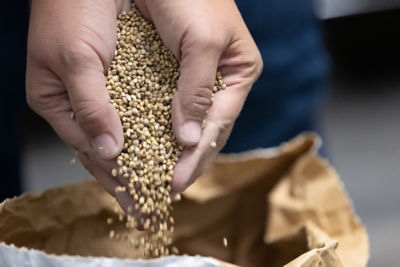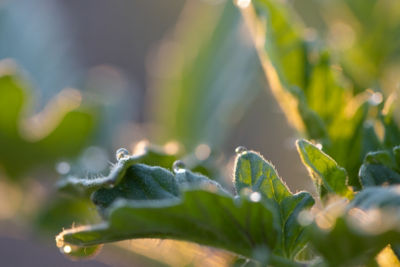Click here to download a PDF version of this spotlight.
» Cucurbit yellow vine disease (CYVD) is a disease of watermelon and other cucurbit crops.
» The squash bug, Anasa tristis, transmits CYVD to cucurbit plants.
» CYVD management strategies focus primarily on squash bug control.
Cucurbit yellow vine disease (CYVD) was first recognized as a disease on summer squash and pumpkin crops in Texas and Oklahoma in 1988 and on watermelon in 1991. However, the cause of the disease was not determined until 1997. We now know that it is caused by the bacterium Serratia marcescens.1 The disease has now been observed on melon /cantaloupe, pumpkin, squash, and watermelon in several states, including Alabama, Arkansas, Connecticut, Georgia, Illinois, Kansas, Kentucky, Massachusetts, Missouri, Nebraska, New York, Ohio, and Tennessee.1,2 The disease causes a yellowing of the leaves and vines, a general decline in plant vigor, and discoloration of the phloem (food-conducting part of the vascular system). The occurrence of the disease has been spotty, with losses usually below 5%, but occasionally losses of up to 100% have been seen, primarily in early planted watermelons.2,3 The CYVD bacterium is transmitted by the squash bug Anasa tristis, which was once thought to be a pest primarily of summer squash and pumpkin but has become an increasing problem on watermelon.1
SYMPTOMS
Typical symptoms of CYVD include a sudden yellowing of the foliage, stunting of plant growth, and a slow decline of plant vigor. With watermelons, the runner terminals may “stand up,” and the leaves may roll. These symptoms typically develop ten to fourteen days before harvest. Early infection may result in a rapid wilting of seedlings without the yellowing symptoms.1,2,3 The diagnostic symptom of CYVD is a honey-brown vascular discoloration, particularly a discoloration of the phloem tissue in the lower crown and upper taproot. Pronounced discoloration and necrosis of the phloem are often seen with watermelon and melon. However, root rot has not been associated with CYVD. Symptoms vary somewhat by crop species and the age of the plant at the time of infection.
 Figure 1. (A) Heavier soils and higher application rates allow water to move horizontally through the soil more quickly. (B) In lighter soils or with lower application rates, water tends to move downward in the soil.
Figure 1. (A) Heavier soils and higher application rates allow water to move horizontally through the soil more quickly. (B) In lighter soils or with lower application rates, water tends to move downward in the soil.
Symptoms of CYVD are similar to those of other problems, including Fusarium wilt, bacterial wilt, squash vine borer, and some nutrient deficiencies. Fusarium wilt and bacterial wilt usually cause a more gradual decline in vigor than is seen with CYVD, and plants affected with Fusarium and bacterial wilt can wilt during the heat of the day but recover at night in the early disease phases. With Fusarium wilt, there may be a reddish-brown discoloration of the xylem rather than the honey-brown discoloration of the phloem seen with CYVD. Bacterial wilt occurs mainly on cucumber and melon but not on watermelon.
 Figure 2. Honey-brown discoloration of the phloem tissue on a plant affected by CYVD. T. Isakeit, Texas Agrilife Extension.
Figure 2. Honey-brown discoloration of the phloem tissue on a plant affected by CYVD. T. Isakeit, Texas Agrilife Extension.
THE PATHOGEN
The bacterial species Serratia marcescens is found in many habitats and fills many ecological roles. It is a common soil resident and colonizer of plant rhizospheres. Some strains are effective biological control agents, and some are insect pathogens. There is also a strain that is associated with crown rot of alfalfa. However, strains of S. marcescens that cause CYVD are unique from other strains, having some different physiological characteristics.1,2
DISEASE CYCLE
CYVD has been observed on squash, pumpkin, watermelon, and melon/cantaloupe. It has not been observed on cultivated cucumbers but has been occasionally found on wild cucumbers.1,2 The pathogen overwinters in adult squash bugs, and cucurbit plants are infected when squash bugs harboring S. marcescens suck sap from the plants. Squash bug transmission is unique among plant diseases, as there are very few diseases transmitted by the heteropteran group of insects to which squash bugs belong. Strains of S. marcescens are also insect pathogens, so it is somewhat odd for this bacterium to overwinter and be transmitted by an insect. Squash bugs also feed by inserting their stylets into the plant’s xylem tissue, while S. marcescens colonizes the plant’s phloem. How the bacterial pathogen is introduced into the phloem during the feeding process is unknown, and other details of transmission are also not well understood. Most phloem-infecting pathogens are transmitted by homopteran insects such as aphids, whiteflies, and leafhoppers.2,3,4
The transmission efficiency of CYVD by squash bugs is somewhat low, with less than 10% transmission by a single insect carrying the pathogen. Transmission rates are higher (30 to 40%) when groups of pathogen-harboring squash bugs feed on a plant.2 The transmission rate is highest in the second week after a squash bug acquires the pathogen, although successful transmission within a few days of acquisition has been documented. Both nymphs and adults can transmit the CYVD bacterium, and the insects can remain infective after they molt. Adult squash bugs can transmit the bacterium for up to eight weeks after acquisition, and evidence suggests that the bacterium reproduces in the insect.4 It typically takes 28 days from the time of infection to initial symptom formation.5 Early planted watermelons are more likely to become infected with CYVD than are later plantings. In Oklahoma, watermelons planted after June 15 are rarely infected by CYVD.1
MANAGEMENT
The most effective management of CYVD is based on the early control of squash bugs.2,3 Using row covers can help protect young plants from squash bug feeding, but row covers have to be removed once plants start flowering. Crop rotation and destroying crop residues immediately after harvest can help keep squash bug populations low. However, management of CYVD will most likely require using insecticides to control the squash bug vector.2,5 In areas where CYVD is known to occur, insecticide applications should begin shortly after emergence or transplanting. Applications targeted at the early nymph stages are usually more effective than those targeting later nymph stages and adults. Scouting for the presence of squash bugs in the planting should begin at the time of stand establishment or shortly after. While it is best to prevent the establishment of squash bugs, insecticides applied to larger populations of squash bugs have been shown to reduce the incidence of CYVD slightly.2 Consult regional vegetable production and pest management guides for recommendations on insecticides labeled for controlling squash bugs on watermelon. Always read and follow product label instructions and restrictions. Avoid harming pollinators and other beneficial insects by selecting the appropriate products and adjusting application times to avoid the presence of pollinators.
Squash bugs are attracted to early-planted squash and pumpkin plants, and these species can be used as trap crops by planting them around the watermelon planting. Scout the trap crops regularly, and initiate insecticide applications to the trap crop when squash bug eggs, nymphs, or adults are detected. Resistance to CYVD has not been identified in watermelon.2
SOURCES
1 Bruton, B., Mitchell, F., Fletcher, J., Pair, S., Wayadande, A., Melcher, U., Brady, J., Bextine, B., and Popham, T. 2003. Serratia marcescens, a phloem-colonizing, squash bug -transmitted bacterium: causal agent of cucurbit yellow vine disease. Plant Dis. 87(8):937-944.
2 Burton, B., Wayadande, A., and Fletcher, J. 2017. Cucurbit yellow vine disease. In Compendium of Cucurbit Diseases and Pests, Second Edition, (Keinath, A., Wintermantel, W., and Zitter, T. editors). American Phytopathological Society, St. Paul.
3 Seebold, K. and Bessin, R. 2011. Yellow vine decline of cucurbits. University of Kentucky Plant Pathology Fact Sheet, PPFS-VG-12.
4 Wayadande, A., Bruton, B., Fletcher, J., Pair, S., and Mitchell, F. 2005. Retention of Cucurbit Yellow Vine Disease Bacterium Serratia marcescens Through Transstadial Molt of Vector Anasa tristis (Hemiptera: Coreidae). Annals of the Entomological Society of America, Volume 98, Issue 6, Pages 770–774.
5 Welty, C. 2011. Yellow vine disease on squash, pumpkins, and melons. VegNet, Vol. 18, No. 8. The Ohio State University Extension Vegetable Crops.
ADDITIONAL INFORMATION
Performance may vary from location to location and from year to year, as local growing, soil and weather conditions may vary. Growers should evaluate data from multiple locations and years whenever possible and should consider the impacts of these conditions on the grower’s fields. The recommendations in this article are based upon information obtained from the cited sources and should be used as a quick reference for information about vegetable production. The content of this article should not be substituted for the professional opinion of a producer, grower, agronomist, pathologist and similar professional dealing with vegetable crops.
BAYER GROUP DOES NOT WARRANT THE ACCURACY OF ANY INFORMATION OR TECHNICAL ADVICE PROVIDED HEREIN AND DISCLAIMS ALL LIABILITY FOR ANY CLAIM INVOLVING SUCH INFORMATION OR ADVICE.
7011_239101 Published 05/24/2023




